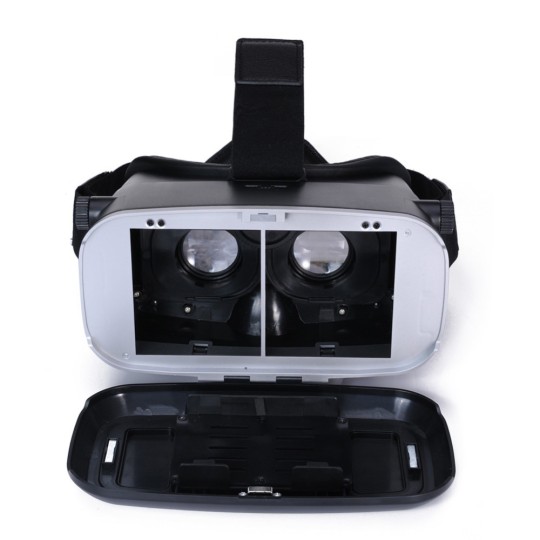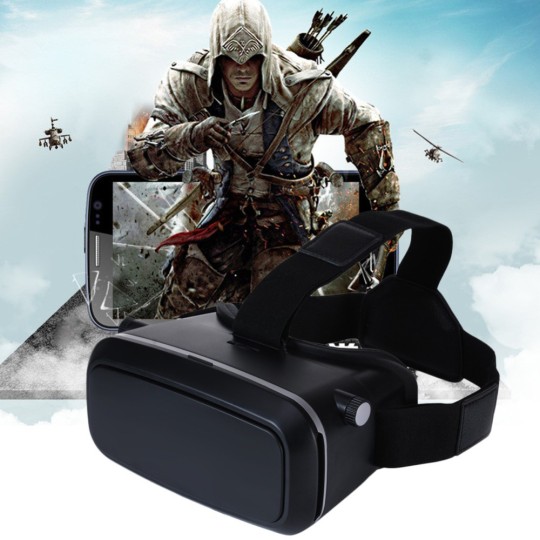Text
VR reality, one 12 months out: What went proper, what did not
After years of teases, tantalizing guarantees, and Kickstarter campaigns, digital actuality lastly turned precise actuality in 2016, with VR’s mere existence thrusting the whole PC trade into wonderful, great turmoil. Regardless of being round for only a handful of months, digital actuality has already impressed completely new genres of computer systems, wormed its approach deep into Home windows, and despatched the worth of graphics playing cards plummeting.
Not too shabby for VR’s first actual 12 months on the streets, although the implementations may nonetheless use some fine-tuning. Let’s look again at how this wild new frontier blossomed in 2016.
The delivery of client VR Headsets
From the very begin of 2016 it was clear that the daybreak of correct PC-powered VR had arrived. You can see proof of this reality throughout CES 2016 in January, the place EVGA launched a specialised graphics card designed to suit VR headset ergonomics; Nvidia rolled out a VR certification program; and seemingly each sales space boasted some form of virtual-reality hook, from VR treadmills to VR porn and VR Everest climbs (the latter two being mind-blowing in their very own methods).

[ Further reading: Your new PC needs these 15 free, excellent programs ] The PC world was prepared. However digital actuality itself wasn’t, not less than till the Oculus Rift’s large client launch later that spring.
Nicely, large in principle. Whereas PCWorld praised the Oculus Rift in its overview—digital actuality was right here, and it was magical!—the launch was removed from excellent. The rumbling started within the run-up to the headset’s launch, with Rift’s $600 launch value far exceeding the $250 to $500 vary that Oculus higher-ups had teased repeatedly. As soon as it really launched, the headset was stricken byshortages and important cargo delays, which didn’t go over effectively in any respect.
However the largest downside for the Rift was that even at launch its days already felt numbered—not a vibe you need from $600 . The Rift was designed primarily as a seated VR expertise, with a controller in your arms. By the point it launched on March 28, lovers and trade press had already hung out taking part in with the SteamVR-powered HTC Vive, which used made-for-VR controllers and devoted monitoring stations to allow room-scale VR experiences that allow you to wander round and really contact issues. After making an attempt Vive, going again to the Rift’s sedentary expertise felt far much less satisfying.
And the HTC/Valve duo didn’t waste any time capitalizing on its benefit. The HTC Vive launched on April 5, roughly every week after the Oculus Rift, and instantly seized the crown as PCWorld’s most well-liked VR resolution.
Regardless of that, we advocate passing on the Rift and the Vive, and for superb motive. Whereas VR will be nothing in need of awe-inspiring, these first-gen merchandise even have some apparent flaws.

Costs and PCs
Man, VR Headsets are costly.
That’s to be anticipated with bleeding-edge , however $600 for the Oculus Rift or $800 for the HTC Vive places them firmly within the “one %” class. The latest launch of Oculus’s $200 Contact controllers drove the price of a full Rift setup to the Vive’s stage, or much more if you'd like kinda-sorta room-scale experiences and wish an additional sensor. VR experiences are usually high-priced and comparatively short-lived in comparison with conventional PC video games. This isn't an inexpensive pastime.
That priciness was exacerbated by the necessity to join these headsets to a reasonably highly effective PC—that value of which was roughly $1,000 to $1,500 on the time of the headsets' launch. Luckily, whereas the Vive and Rift themselves have stayed on the identical lofty costs, the price of a pc to run them completely plunged because the 12 months carried on.
The plunge started with the launch of AMD’s Radeon RX 480, which revolutionized what’s attainable with a $200 graphics card. Earlier than its launch, VR-capable graphics playing cards value practically twice that quantity. (Nvidia shortly adopted go well with with the $250 GeForce GTX 1060.) Leaping ahead two full technological generations paid main dividends for graphics playing cards.

Software program methods helped democratize VR simply as a lot. On the Oculus Join convention in October, the corporate revealed a brand new function dubbed “Asynchronous Spacewarp” that used technical methods to drive the barrier to entry for Rift VR approach, approach down—all the best way to an AMD AM4 or Intel Core i3-6100 processor, and a GeForce GTX 960 graphics card. In March, a Rift-ready PC value not less than $1,000; after Oculus Join, Rift-ready PCs began at $500, and as I write this there’s a Finest Purchase promotion providing a full PC and the Rift itself for $999.
Scorching rattling, costs plunged quick. And one other pesky PC VR downside is already in all people’s sights.
Wired woes
The HTC Vive and Oculus Rift each drive very high-fidelity gaming experiences, and headsets must be bodily tethered to your PC to be able to work. That form of sucks. It’s all too straightforward to journey over the thick cables when you’re wandering across the room ensconced in a digital world, or to twist and switch a lot that the twine ultimately jerks your head again.
That (typically literal) headache impressed the delivery of an entire new class of gaming PCs—ones that you just put on in your again. You’re nonetheless wired up, certain, however these wires journey with you rather than getting tangled between your ft. Zotac, MSI, Alienware, and HP have all revealed backpack PCs of varied designs, although none have really hit the road but.
As nifty as they're, nonetheless, backpack PCs really feel like a stopgap resolution—a repair to an issue that can disappear when extra sturdy wi-fi show applied sciences or stronger cell graphics arrive. And you may already see that wi-fi future on the horizon, with Oculus testing a completely self-contained cell Rift prototype pictured above and HTC backing a $220 add-on equipment that makes the Vive wi-fi.

Past PCs
Whereas highly effective PC-based VR experiences could also be tethered, the extra modest world of phone-driven cell VR has already left cords far behind.
Samsung’s Gear VR headset (which solely works with Samsung Galaxy telephones) blazed the Android VR path, whereas Google’s low-cost Cardboard introduced it to the plenty. In late 2016 Google stomped into the Gear VR’s turf with Daydream VR, an Android-centric initiative that brings premium cell VR to the whole ecosystem slightly than Samsung’s telephones alone.
Daydream facilities on a trio of pillars: highly effective telephones, Daydream VR headsets, and Android Nougat’s new VR options. Whereas Google’s personal Daydream View headset and Pixel cellphone kicked off this system, Daydream isn’t its alone. HTC, LG, Xiaomi, Huawei, ZTE, Asus, Alcatel, Lenovo, and sure, even Samsung have pledged to create Daydream cell gadgets.
Microsoft’s HoloLens is form of a mixture of PC and cell VR, whereas additionally a unique beast totally. It’s a conveyable, absolutely self-contained system that doesn’t want to connect with a PC, however HoloLens makes use of augmented actuality, not digital actuality. Digital actuality plops you in absolutely realized digital worlds; augmented actuality, because the title implies, augments the actual world with overlaid objects, akin to a Minecraft world sprouting out of your espresso desk or a Skype video chat showing in your wall.
Microsoft nonetheless hasn’t revealed particulars about when (or if) HoloLens will likely be accessible to client customers, or how a lot it will value, however deep-pocketed builders and enterprise customers can already decide up the headset for a cool $three,000.
The longer term
Expensive HoloLens headset aren’t Microsoft’s solely foray into VR. The huge Home windows 10 Creators Replace subsequent spring will bake augmented actuality options a lot, way more deeply into the flagship PC working system, and it’ll be accompanied by a military of latest Home windows 10 VR headsets at launch—headsets that can begin at simply $300 and run on surprisingly modest PCs. In the meantime, Intel and Microsoft’s Challenge Evo partnership goals to vary how computer systems “assume, see, and listen to,” with a particular objective of driving combined actuality ahead.
If 2016 was delivery of a virtual-reality revolution, search for 2017 to be a 12 months of VR refinement. Witness the brand new, Oculus Contact-esque Vive controllers that Valve already started to tease, and bookmark the vacation 2017 launch of Microsoft’s highly effective Xbox Scorpio console—which may very probably leverage the Home windows 10 Creators Replace to run the Oculus Rift or Home windows 10 VR headsets as a counter to Sony’s surprisingly okay PlayStation VR.
Subsequent 12 months, VR video games ought to solely get higher as builders acquire extra expertise... if they'll navigate the difficult world of client expectations and uncover what individuals actually need from the medium, that's. The price of VR-capable PCs will solely maintain taking place. Anticipate augmented actuality to proceed making inroads in automotive tech. The Vive and Rift could even get value cuts! Heck, with sufficient advances, 2017 could be the 12 months PCWorld formally recommends you purchase a VR headset.
youtube
0 notes